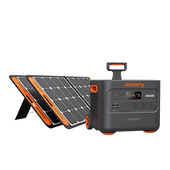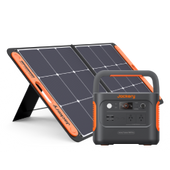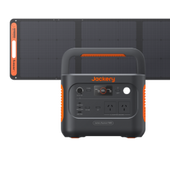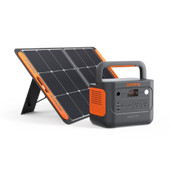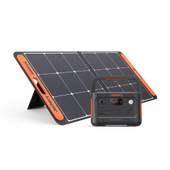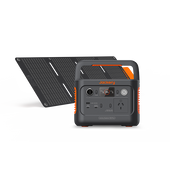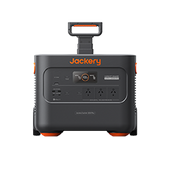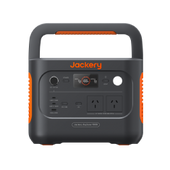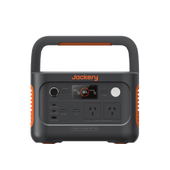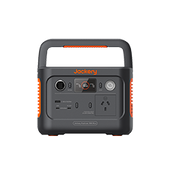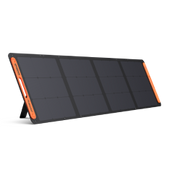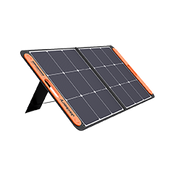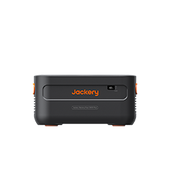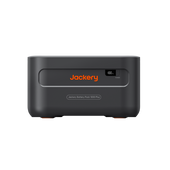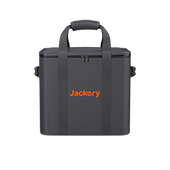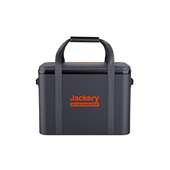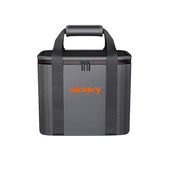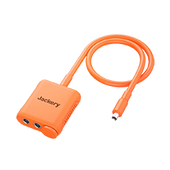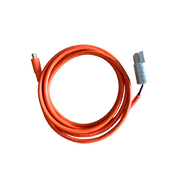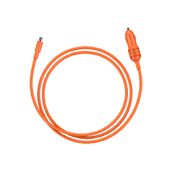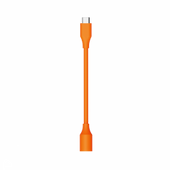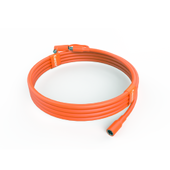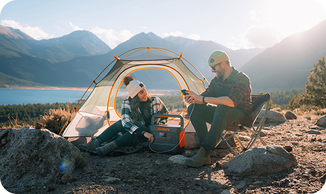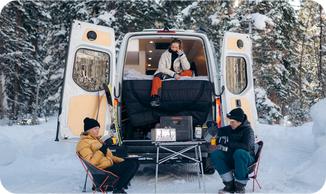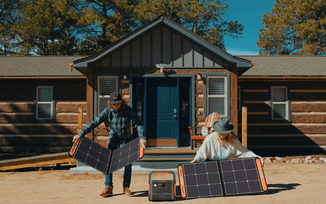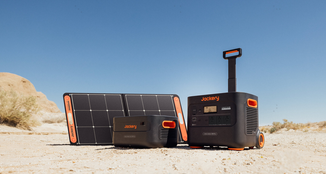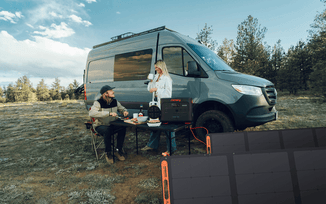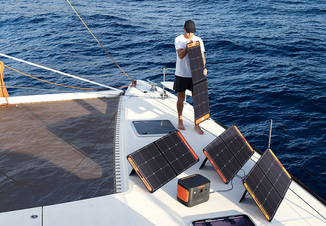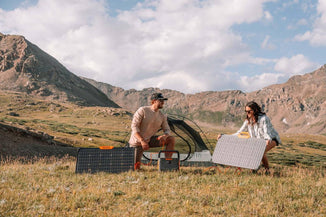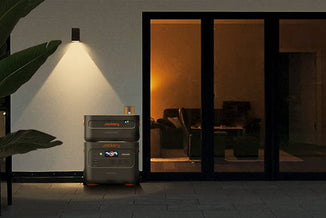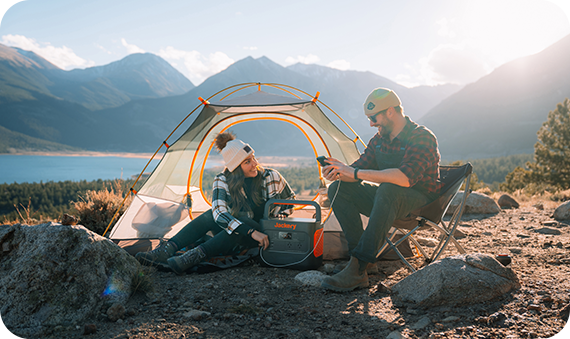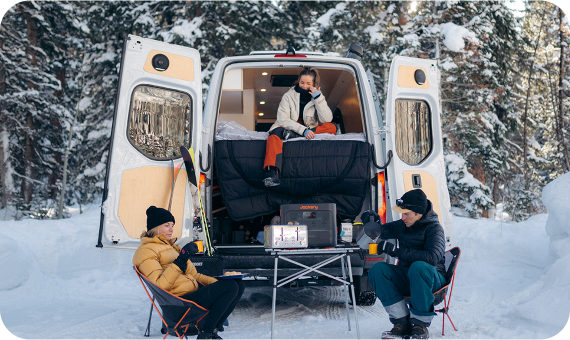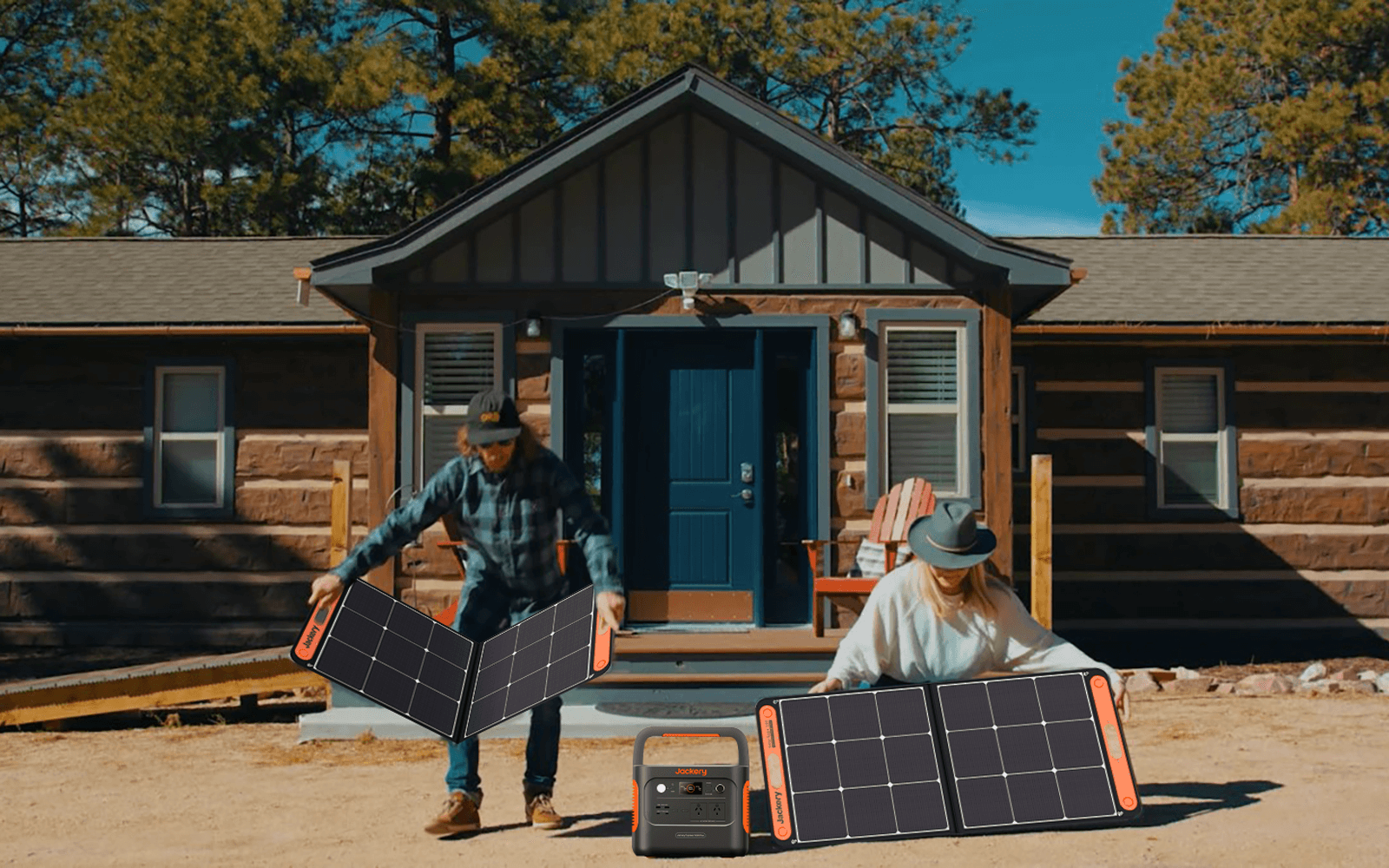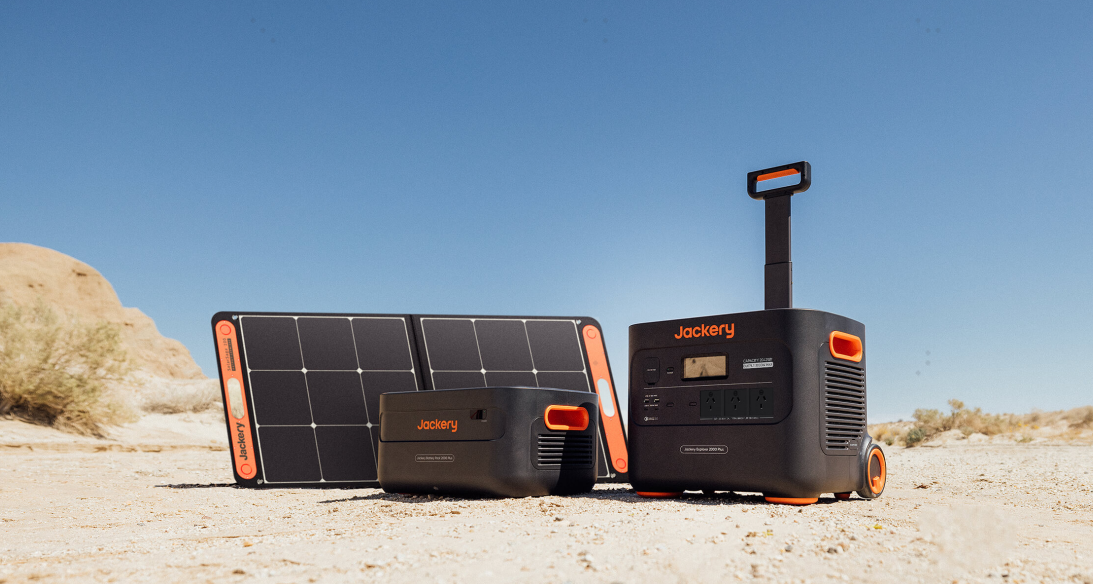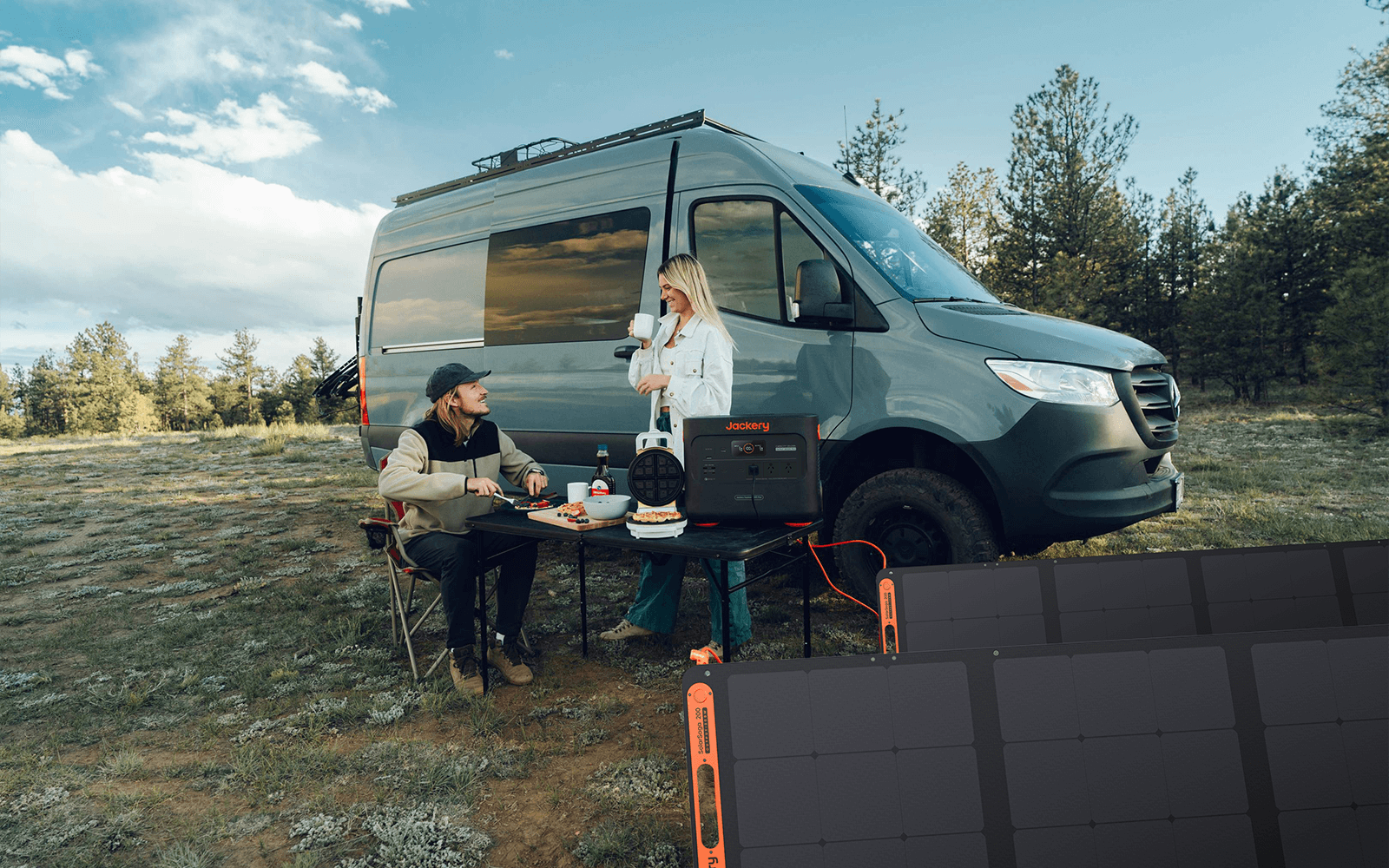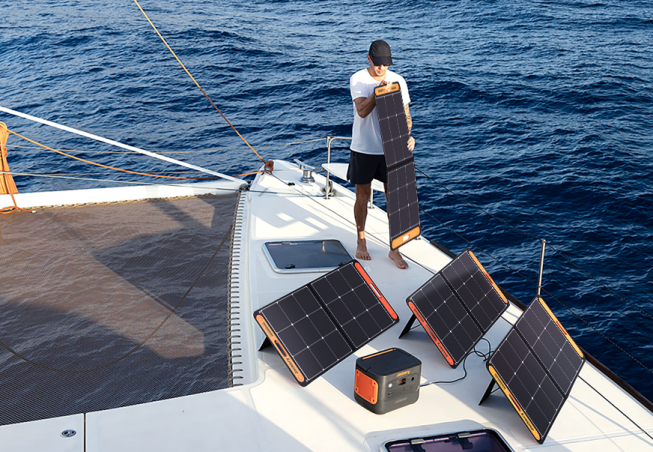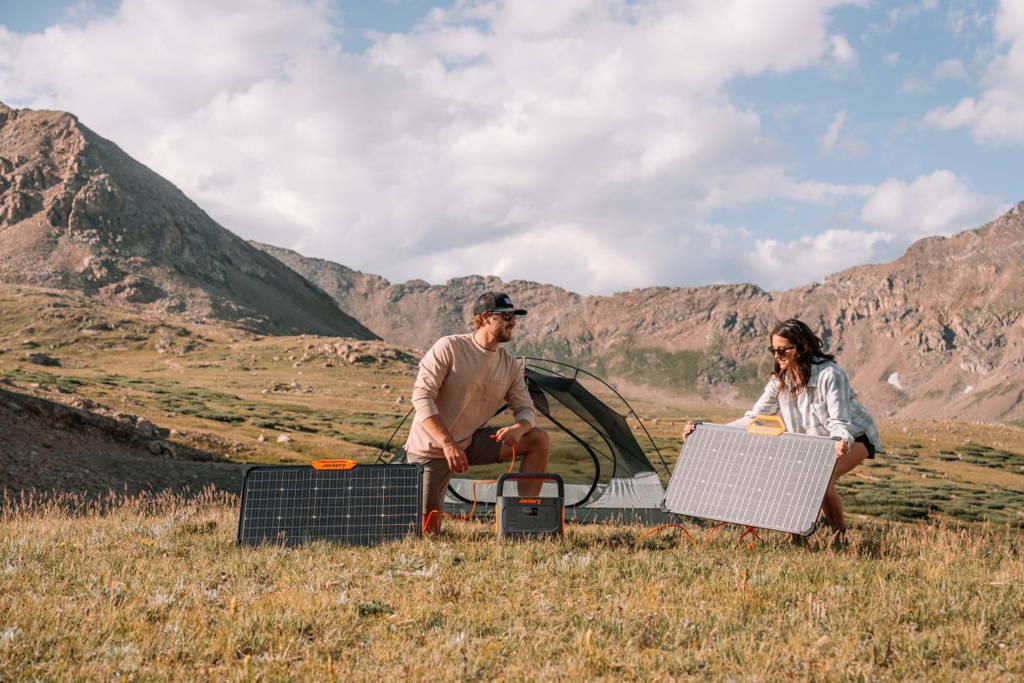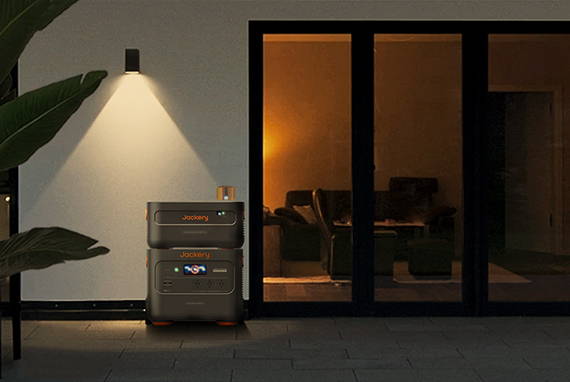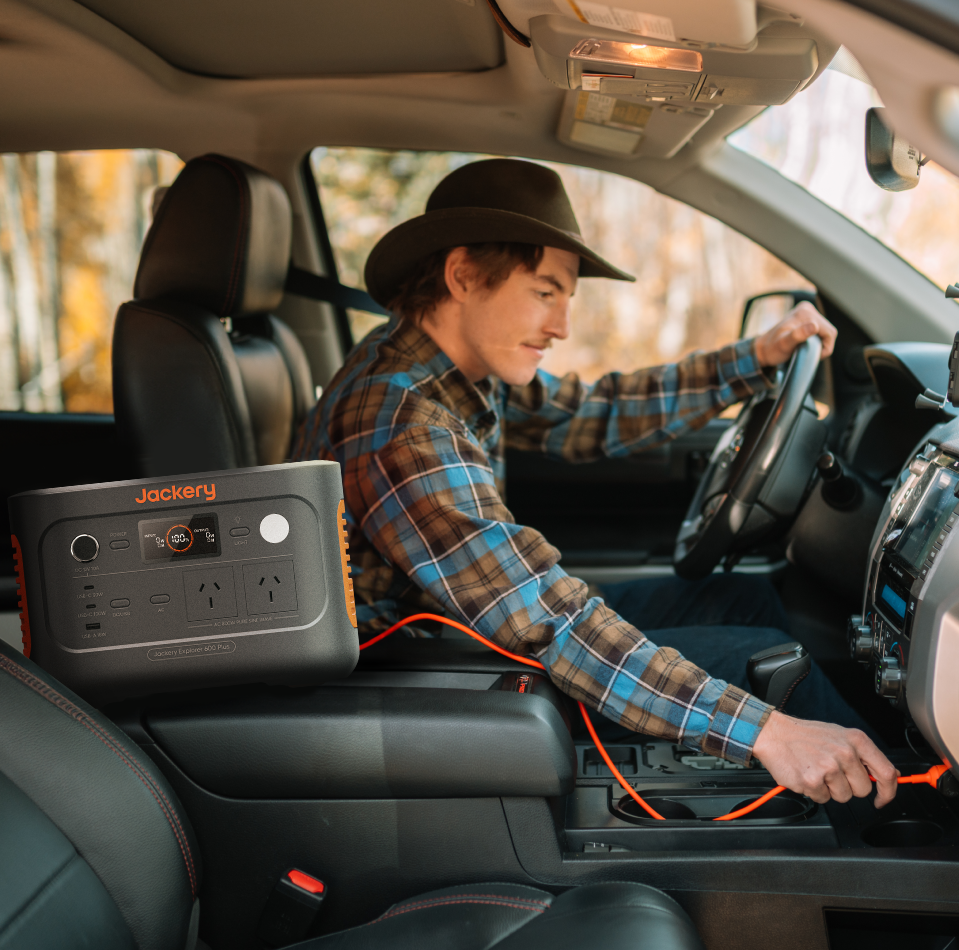|
Key Takeaways: |
|
- Cape York is Australia's best motorcycle adventure location, with tough terrain, river crossings, lonely outback trails and breathtaking scenery. - The Old Telegraph Track is the most famous and challenging, with deep creek crossings, mud pits, rocky slopes, and dense bush pathways that challenge even professionals. - The best time to ride Cape York is during the dry season (May to October), when road conditions are more stable and creek levels are safer for crossing. - Riders need gear, sunscreen, repellent, and travel insurance to avoid dehydration, sunburn, insect bites, and limited medical treatment. - Riders new to off-roading or Cape York can consider guided trips for their structure, safety, and expert support. - We highly recommend Jackery Explorer 1000 v2 and 600 Plus portable power stations to power your electronics, communication devices, or camping appliances outdoors. |
Basics of Cape York Motorcycle Tours
Cape York motorcycle tours are off-road motorcycle experiences led by experienced guides that allow motorcyclists to explore the harsh and desolate landscapes of Cape York, which is located at the northernmost point of Australia.
These trips provide an immersive experience in the region's diverse landscape, including jungles, river crossings, sandy tracks, and iconic routes like the Old Telegraph Track. These tours are meant for individuals who are interested in off-roading and adventure. Cairns is the starting point for the majority of excursions, which typically follow a multi-day itinerary and provide a variety of alternatives, including one-way rides and round-trip adventures.
What Do They Offer?
They typically consist of high-performance dirt bikes, which are versions manufactured by KTM, Suzuki, or Honda. Also, they provide help vehicles for the transportation of luggage and mechanical help and guides with years of experience who guide motorcyclists along the most attractive routes. Additionally, they provide lodging at campgrounds, lodges, or stations in distant areas. Meals and fuel are also provided for the travel along the way.
Who Offers It?
Well-known companies with distinctive itineraries and experiences are Cape York Motorcycle Adventures, Fair Dinkum Bike Tours, Top End Moto Tours, and NQ Dirt Bike Tours. Although these tours accommodate a range of ability levels, having some prior off-road riding experience is frequently advised. Exploring the breathtaking natural beauty, Indigenous culture, and remote wilderness of Far North Queensland is just as much a part of the journey as the ride.
When Is the Best Time?
When the roads and river crossings are passable, and the heat is acceptable (it will still be more than 25 degrees Celsius most of the time), which is during the dry season, which covers the months of May through October. Try attending outside of school holidays as well if you want to avoid the larger crowds that are generally present.

Why Is Cape York the Best Motorcycle Adventure for You?
Cape York is a rider's paradise since it provides zero percent off-road thrills, very little traffic, and all-out riding possibilities. As you negotiate challenging routes, riverbeds, and rainforests, you won't be stranded behind trucks and buses; instead, you will put your talents to the test as you navigate these environments.
Cape York has countless dirt roads, river crossings, and challenging trails, such as the well-known Old Telegraph Track. Cape York is a rider's heaven. Those who enjoy venturing off the beaten road will find this ride offers the ideal combination of technical riding and exciting exploring features.
The scenery constantly shifts, with sweeping ocean views, crystal clear rivers, deep rainforests, and tropical savannahs making up some of the different types of terrain. When you ride here, you can experience Australia's natural and unspoiled beauty, far from the crowds.
Within the realm of Australia, Cape York is about as remote as it gets. The experience of riding to the furthest northern point of the continent is comparable to a rite of passage. As part of the genuine adventure, you can engage with indigenous tribes, sleep out beneath the stars, and travel across rivers plagued with crocodiles.
A strong sense of community can be found on the path, whether riding alone, with friends, or on a guided tour. Riders are helping riders out in this area. The journey is taken together, full of grit, laughter, and stories told around the fire.

Road Conditions in Cape York Motorcycle Tours
Road conditions at Cape York can be complex and unpredictable depending on the route and weather conditions. The region is famed for its rocky and lonely trails, making it an exciting yet challenging destination for motorbike tours. If you're planning a journey, make sure to check road conditions and receive up-to-date information on any closures, as heavy rain might render certain roads unusable. Here are some of the most popular trails in Cape York:
A. Old Telegraph Track (OTT)
Terrain: Rugged, narrow, and challenging.
Surface: Predominantly dirt and gravel with sections of mud, rocks, and water crossings.
Difficulty: High. It requires advanced off-road riding skills due to the technical terrain.
River Crossings: Several, including challenging ones like Cinnamon Creek and Palm Creek.
Conditions: If it rains, the track may become extraordinarily slippery or boggy, and it may become impossible to walk during the wet season (December through March).
B. Peninsula Development Road (PDR)
Terrain: Gravel and dirt roads, some sealed sections.
Surface: Corrugated gravel with occasional washouts and potholes.
Difficulty: Moderate. It is generally easier than the OTT but still requires caution.
Road Maintenance: The PDR is more regularly maintained, though it can still be rough and prone to flooding during the wet season.
Conditions: During the dry season, which runs from May to October, conditions are more tolerable.
C. Rivers and Creek Crossings
Water Crossings: Several crossings that can be deep and fast-moving after heavy rain, including Leichhardt River and Sandy Creek.
Safety: River crossings can be hazardous—don’t attempt them unless you are confident in your ability to gauge water depth and strength.
Conditions: This is especially true during the wet season, when rain can make crossing conditions extremely hazardous and certain roads completely impassable.
Contacts, Useful Apps & Websites for Motorcycle Tours
The following are valuable contacts, apps, and websites you will need during your Cape York motorcycle tours or other adventures.
Contacts
Emergency Services:
Emergency (Police, Ambulance, Fire): Dial 000 (Australia-wide)
Non-Emergency Police Assistance: 131 444
Royal Flying Doctor Service (RFDS): 1800 625 800 (For emergency medical support in remote areas)
Local Info and Support:
Tourist Information Centre – Cooktown: Ph: (07) 4069 5446
Useful Apps
Navigation and Mapping:
Hema Explorer: Offline maps, tracks, waypoints, and detailed off-road info – ideal for remote Cape York routes.
Gaia GPS: Great for planning routes and tracking your ride offline in remote areas.
Wikicamps Australia: Find campgrounds, rest stops, and user-submitted reviews – a must-have for overnighters.
Google Maps: Still useful, but patchy service in remote regions—download offline maps before you leave.
Safety and Communication:
Emergency+ App: Developed by Australian emergency services. Pinpoints your GPS location for emergencies.
Zoleo or Garmin Messenger: This is for riders using satellite communication devices. It works via the Iridium network where mobile reception fails.
Weather and Conditions:
BOM Weather (Bureau of Meteorology): Accurate weather forecasts, rain radar, and cyclone warnings—are essential for Cape York's unpredictable weather.
QLDTraffic App: Real-time road conditions, closures, and alerts across Queensland, including Cape York.
Websites
|
Cape York Motorcycle Adventures |
Website: www.capeyorkmotorcycles.com.au |
|
Contact: (07) 4055 0050 |
|
|
Fair Dinkum Bike Tours |
Website: www.fairdinkumbiketours.com.au |
|
Queensland Parks and Wildlife Service (QPWS) |
For info on national parks, permits & closures |
|
Website: www.parks.des.qld.gov.au |
Safety, Security and Health Tips for Motorcycle Tours
When it comes to getting started, there are many things to think about, so here are some things we've learnt on the journey, most of the time the hard way. The first thing you should do is admit you are mortal.
One of the first things you can do to lessen the likelihood of experiencing sadness is to increase your awareness of the dangers inherent in any sport, especially motorcycling. If you know that, you have already arrived at the halfway point. Given the remote and challenging terrain of Cape York, safety, security, and health are of utmost importance when going on a motorbike tour there.

Safety Tips for Motorcycle Tours
Protective Gear: Always use high-quality protective gear, such as a helmet that covers your entire face, gloves, riding boots, an armoured jacket, knee and elbow protection, and so on. Because the terrain can be cruel, it is necessary to have the appropriate gear in order to avoid getting hurt.
Riding Skills: The majority of accidents happen when riders try to go faster than their skill level allows, which typically occurs when one ego gets in the way. If a cyclist passes you, ask yourself some questions because, let's face it, there will always be someone faster than you.
How far will it be before I scrape him off the track?
If I give him back, what will it prove?
What would happen to my odds of completing the journey if I pursued him?
You're still going in pursuit, all right, but remember that you're there to enjoy the company, the journey, and the view. From the rear of an ambulance, none of which are delightful. Have fun, but don't push yourself too far.
Additionally, be ready for challenging off-road conditions, such as muddy paths, loose gravel, and river crossings. Proficiency in off-road riding is essential, particularly on the Old Telegraph Track.
Speed: We prefer to ride at seven-tenths, fast enough to keep us focused and attentive but not so fast that we get caught. Go at your own speed. Avoid following a quicker rider and, more importantly, avoid lingering behind a slower one. The latter is more risky since it causes us to lose focus on our current task and begin thinking about important issues like "What's for dinner?" Give the slower rider you're riding with an opportunity to catch up before you play catch-up.
However, how far you can see is the primary factor influencing speed. Nothing can harm you as long as you remain vigilant, so you're safe if you can stop within your field of view. That is, aside from moving objects.
Moving Things: These are usually animals or veggies in other vehicles. Stay alert since both can happen suddenly and badly. In Cape York, wild pigs and roos are the largest wildlife threat. While they might appear anywhere, there are ways to limit the risk of a collision. They're most active around dawn and dusk, so ride slowly and watch both sides of the trail. If you see one, brake hard and watch out for his friends. They usually travel in pairs.
Avoid bushed on the track edge when cruising, especially around vermin fences, because they like to sleep in the shade. Animals of various kinds flock near vermin fences, so avoid travelling next to them
The most straightforward approach to avoid animal-related mishaps is to watch for stock signs, know the local animals, and stay alert. Treat livestock with respect. Farmers depend on their animals and don't want bikers to carve them up. Slow down and idle through, pull over and halt as a throng passes, or take a wide queue if it's going your way.
Other Vehicles: Even in rural areas, other cars may utilise the same track as you and your company. Normal people stay left on blind corners. Don't drift wide or make too much noise since the person coming the other way may not be as reasonable as you and take up your track. Crests are another hazardous zone, so stay left and check the pegs for a preview.
Overtaking: When passing a slower vehicle, give it plenty of space because bike tyres fling stones like crazy. Press the throttle steadily, steer right as much as possible, and pass smoothly. Pulling in rapidly will likely shower the other truck with $5000.00 worth of duco with pebbles, so leave a considerable distance before returning to the left. They may meet you at the petrol station in the next town.
Think about the other individual, especially if they're biking. Skipping past someone and spewing dust can impair their vision and shock them if they dream. Don't pass quickly before a rough bend or rut.
Riding in Groups: Larger groups increase disaster risk. Riders in groups of twelve or more should spread out and leave plenty of room. Never bike in another's dust. Visibility is limited, your air filter is beaten, and your eyes and lungs suffer.
The pack usually spreads out, although half a dozen riders linger off the lead person's rear guard. Step back. You leave their roost dust-free and are more likely to enjoy the ride. Furthermore, reversing two hundred meters will delay you by 20 seconds. Significant. Which is smarter is obvious.
The Corner Man System: Losing someone when travelling in groups is a significant issue. The Corner Man System is the most excellent solution. Your guide is the lead rider and cannot be passed. You nominate a tail or sweep rider with no follower. The guide stops at each intersection and waits for the rider directly behind him to arrive, then informs that rider which direction to take, then waits for the second rider, the third rider, and so on until the whole group is headed in the right direction.
There are traps here, too. The rider on point duty should make sure the person they hand over to knows the appropriate path. The guide will stop periodically to regroup and count riders, although time can be wasted looking for lost cyclists.
Dust: If possible, avoid it. We used to jump behind a car, take a wide queue and hope to survive. That was before champion racer Dave Kruger died doing it in the long-distance enduro event, The Australian Safari '91. He's not the only rider to die in this manner. Slow down when passing a dusty vehicle—five minutes is not worth your life.
Pull over, slow down, and stop if a vehicle is approaching. Wrapping your bike around a bonnet insignia is the worst method to find 4WDs and trucks in convoy. Because bike accidents hurt, we often avoid the road.
Weather Conditions: It is essential to be mindful of the weather conditions, especially during the wet season (December to March), when roads may become slick or flooded. Ride cautiously and adjust your speed when the conditions are rough.
Vehicle Condition: Ensure that your bicycle is in good condition and has adequate fuel supplies, spare parts, and tools. Cape York is located in a distant area, so access to mechanics and spare parts may be restricted.

Security Tips for Motorcycle Tours
Crime Risk: Cape York is generally a safe region with low crime rates. However, since it's remote, take the usual precautions:
Keep valuables securely locked up.
Be cautious about leaving your bike unattended for long periods.
Use secure storage if available when stopping at accommodations or campsites.
Personal Safety: Even though Cape York is a secluded location, there are instances in which visitors come into contact with wildlife or other travellers, particularly in the most remote sections. If at all feasible, ride with a friend or in a group, and ensure that someone is aware of your plan and the times you anticipate arriving.
Communication: When you journey further into Cape York, the signal quality of your mobile phone will become increasingly inconsistent. If you want to stay in touch in an emergency, consider carrying a satellite phone or a GPS-tracking gadget.
Travel Insurance: It is strongly recommended that you purchase comprehensive travel insurance, which should include coverage for remote areas and medical emergencies, in addition to coverage for bike damage or breakdowns.
Route Planning: Plan your travels carefully, taking into account fuel stops, meals, and lodging. Tell someone about your daily plans, especially if you're heading off the main routes into more remote places.
Respect Local Communities: Cape York has several Indigenous communities. Respect local customs and traditions, and always request permission before accessing restricted regions or territories. Being mindful of cultural sensitivities is critical for maintaining positive relationships with the local population.
Wildlife Safety: Be aware of harmful species like crocodiles, especially near rivers and marshes. Always get local guidance on safe swimming and camping areas. Never camp close to water sources unless you are certain they are secure.
Road Condition Updates: Road conditions can change rapidly due to weather or natural events (e.g., flooding, landslides). Before your trip, check for any road closures or updates from local authorities or tour operators to stay informed.
Health Tips for Motorcycle Tours
First-Day Fever: The classic case occurs early in any ride, with the afflicted rider bursting enthusiastically and hammering down right from the start. The outcomes are considerably more evident if the symptoms are apparent: overshot corners, near misses, heaps of wheel spin quickly progress to crashes and a sudden rise in the rider's level of common sense.
The cure is straightforward. Pace yourself at the beginning of the ride. Sure, you may be excited and eager to ride, but give yourself time to settle in, get the feel of things, and get used to the conditions. This will allow you to get a sense of things and then let the speeds build, with a much lower chance of injury.
Hydration: Keep yourself hydrated because Cape York may be a hot and humid place. It is especially important to avoid dehydration and carry a large amount of water when riding in isolated areas where supplies may be limited.
Insect Protection: This area is home to a variety of biting insects, including mosquitoes, flies, and others. It is extremely important to use bug repellent when camping to avoid getting bitten and contracting diseases such as the Ross River virus.
Sun Protection: The tropical environment can be intense with powerful ultraviolet radiation. In order to prevent sunburn and illnesses caused by heat, it is important to wear sunglasses, protective clothing, and sunscreen.
Food and Water: Check that your food or water is stored securely and sanitary. Be wary of consuming water that has not been treated from rivers or streams because there is a possibility that it could be contaminated.
Medical Facilities: It may take some time to receive aid because there are few medical facilities in Cape York. It is absolutely necessary to have travel insurance that provides coverage for distant places and medical evacuation if required.
Snake and Wildlife Awareness: Venomous snakes and various types of animals may be found in Cape York, including crocodiles that live in rivers. Exercise caution in areas close to water and steer clear of strolling barefoot in dense woods.
Emergency Tips for Motorcycle Tours
Emergency Contacts: Learn how to get in touch with the emergency services. 000 is the general emergency number in Australia, and it can be used for fire, ambulance, or police emergencies. Make sure that you have a list of local emergency contacts, which should include the medical facilities that are closest to you.
Breakdowns and Recovery: The region's remoteness makes it challenging to acquire rapid assistance if your bike breaks down. Bring a toolkit, extra fuel, and a puncture repair kit. In the event of a severe mechanical failure, a satellite phone can be a lifeline for coordinating recovery.
Bring an Emergency Kit:
Basic First Aid Supplies: Bandages, antiseptics, pain relievers, snake bite kits, tweezers, and splints.
Tools and Spare Parts: Multi-tool, spare spark plugs, chain lube, puncture repair kit, tyre pump, and a small bike repair kit.
Communication Device: Satellite phone or personal locator beacon (PLB).
Water Filtration: If you intend to obtain water from natural sources, a portable water filter device or purification pills.
Emergency Power Backup: Jackery Portable Power Station.
Jackery Portable Power Stations for Motorcycle Tours
A Jackery Portable Power Station can be an incredibly valuable asset for motorcycle tours in Cape York, Australia, where access to reliable mains electricity can be limited or non-existent. It can keep phones charged, is crucial for communication, navigation using GPS apps, and emergencies, and captures the stunning scenery and adventure of Cape York, which requires charged cameras. Dedicated GPS units often have better battery life but still need occasional charging.
Australia has high solar irradiance, making solar panel integration particularly effective. Connect Jackery Solar Panels to your Jackery Portable Power Station to charge it during the day using free sunlight. Store this solar energy and use it later, reducing your reliance on grid electricity, especially during peak times or at night. We recommend Jackery Explorer 1000 v2 and 600 Plus to power your motorcycle tours here.
Jackery Explorer 1000 v2
The Jackery Explorer 1000 v2 Portable Power Station is engineered for mobile energy solutions. Weighing about 23.8 lbs and equipped with a compact foldable handle, it is more lightweight and portable than conventional items. Besides, it is 20% smaller and 10% lighter than mainstream products. This powerhouse conveniently fits into the back compartment for effortless storage, guaranteeing you are never without power.

With a robust 1500W AC output and a surge peak of 3000W, this device can support various outdoor appliances or devices, such as phones, laptops, portable coolers, etc. This power station includes 100W PD Fast USB-C charging (both input and output) for efficient recharging, possesses a substantial 1070Wh capacity, and is designed in a compact size to optimise space utilisation.
Jackery's upgraded Power Station exhibits a 50% enhancement in power output compared to the previous Explorer 1000 model, with an AC output of 1500W. It charges 7.5 times faster, achieving a full charge in just 59 min through the Jackery App. The LiFePO4 battery exhibits a lifespan four times greater than conventional batteries, supporting 4,000 life cycles while maintaining over 70% of its capacity.
The Jackery Explorer 1000 v2 offers rapid charging capabilities, achieving a full charge in 60 minutes when utilised with the accompanying application. The ChargeShield 2.0 system provides 62 types of safety protection and is CE-certified. It features comprehensive fire and shock resistance to ensure quality and optimal safety.
|
Electronics & Devices |
Running Time |
|
Ceiling Fan (90W) |
8.4H |
|
Pedestal Fan (80W) |
9.2H |
|
Box Fan (100W) |
7.6H |
|
Desk Fan (40W) |
16H |
|
Window Fan (80W) |
9.2H |
(*The working hours are only for reference; the actual working hours depend on your usage.)
Jackery Explorer 600 Plus
The Jackery Explorer 600 Plus redefines portable power by combining state-of-the-art technology with unmatched security. Its 632Wh capacity and 800W power output allow it to sustain a range of electronics and devices seamlessly. Easy portability is guaranteed by the design's low weight of 7.3 kg.

Using cutting-edge ChargeShield Technology, the Explorer 600 Plus provides 52 types of protection against possible hazards like short circuits and overvoltage. It can get a complete charge in 1.6 hours, has enhanced battery pack longevity by 30%, and is designed for enduring reliability.
It supports three charging modes, including a rapid one-hour Emergency Super Charging Mode. The Emergency Super Charging mode is enabled via the app; the Fast and Quiet Charging modes offer enhanced battery protection. Its quiet operation (≤22dB) and durable, shockproof build make it a reliable companion for Cape York motorcycle tours.
The UPS capability of the Explorer 600 Plus accommodates certain computers, freezers, and CPAP machines necessitating an uninterruptible power supply within 20ms, including the HP Z230 and ResMed AirSense 10, both evaluated by Jackery's Lab. Kindly verify compatibility prior to usage to guarantee optimal functionality.
|
Electronics & Devices |
Running Time |
|
Ceiling Fan (90W) |
5.2H |
|
Pedestal Fan (80W) |
5.8H |
|
Box Fan (100W) |
4.7H |
|
Desk Fan (40W) |
10.4H |
|
Window Fan (80W) |
5.8H |
(*The working hours are only for reference; the actual working hours depend on your usage.)
Cape York Motorcycle Tours FAQs
The following are the frequently asked questions about the Cape York motorcycle tours.
1. What is the most extended road trip on a motorcycle?
In 1995, Emilio Scotto completed the most extended motorbike voyage ever, having travelled for ten years, two months, nineteen days, and eleven passports.
2. Are touring motorcycles worth it?
Touring motorcycles are fantastic multipurpose vehicles ideal for travellers and commuters! In actuality, touring bikes are among the only types available that are built to accommodate long-distance or cross-country travel.
3. Can I ride a motorcycle on a car licence in Australia?
In Australia, you require a separate rider's licence in order to operate a motorcycle, trike, or scooter. In Australia, a motorcycle rider's license—not a driver's license—is required in order to operate a bike, trike, or scooter on public roads. A learner rider licence, which permits you to operate learner-approved motorcycles (LAMS) with specific restrictions, is a good place to start. You can advance to a full rider licence, enabling you to manage any motorcycle after fulfilling the prerequisites.
4. What size motorcycle is best for touring?
Motorcycles in the 500cc to 750cc range are ideal for more seasoned riders since they provide greater power and torque. They can handle a variety of riding situations, carry passengers, and go on long-distance tours.
Final Thoughts
Cape York is a bucket-list motorbike trip location for raw adventure, natural beauty and Aussie bush attitude. The appropriate planning, gear, and understanding can make this tour one of your most gratifying rides. Explore Far North Queensland's wild heart with this guide and make your Cape York motorcycle tours unforgettable. All adventure riders want to reach the tip and take that classic shot at the signpost. This ride will change your life forever. Cape York may be the perfect off-road challenge with stunning scenery and real adventure.

